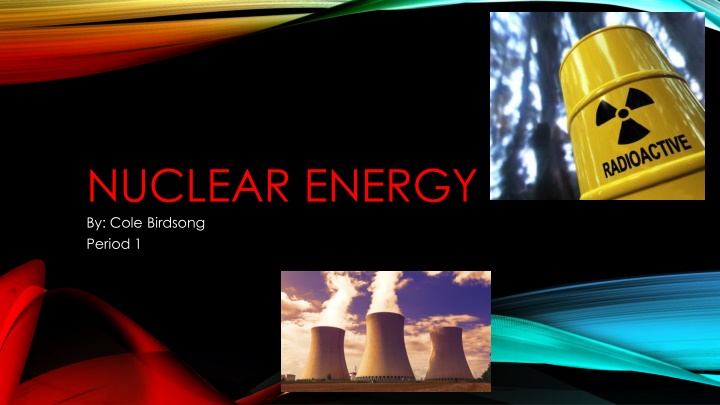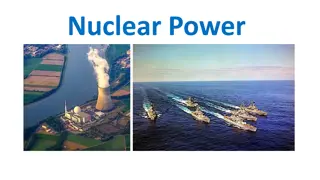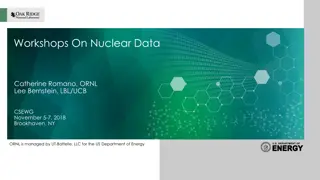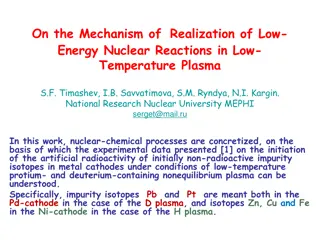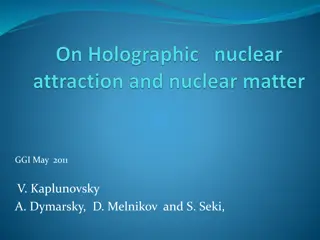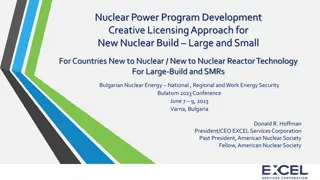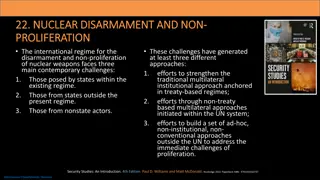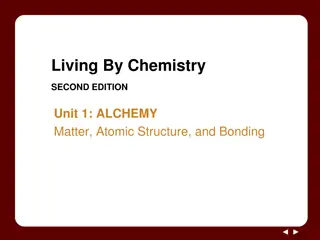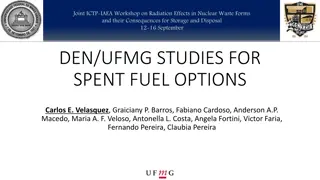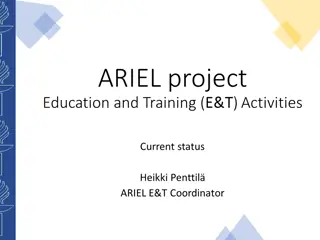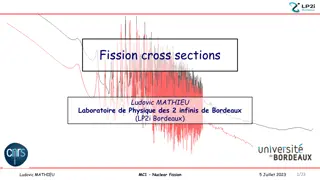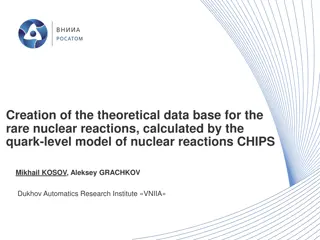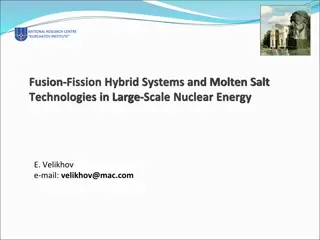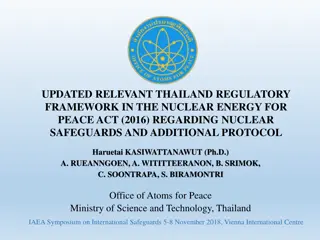Overview of Nuclear Energy
Delve into the history, current status, and challenges of nuclear energy, including notable incidents, electricity generation statistics, waste disposal methods, and pros and cons. Explore the different levels of nuclear waste and how nuclear energy contributes to the energy landscape.
Download Presentation

Please find below an Image/Link to download the presentation.
The content on the website is provided AS IS for your information and personal use only. It may not be sold, licensed, or shared on other websites without obtaining consent from the author.If you encounter any issues during the download, it is possible that the publisher has removed the file from their server.
You are allowed to download the files provided on this website for personal or commercial use, subject to the condition that they are used lawfully. All files are the property of their respective owners.
The content on the website is provided AS IS for your information and personal use only. It may not be sold, licensed, or shared on other websites without obtaining consent from the author.
E N D
Presentation Transcript
NUCLEAR ENERGY By: Cole Birdsong Period 1
BRIEF HISTORY On Oct. 7, 1957, England: fire in Wind scale plutonium production reactor releases radioactive material over countryside Jan. 3, 1961, Idaho: experimental reactor in Idaho Falls goes out of control killing 3 technicians April 26, 1986, Soviet Union: explosions severely damage nuclear reactor in Chernobyl Ukraine, killing 2 technicians Knew nothing about nuclear energy until the 1900s First released it in 1942 at the University of Chicago The fission of 1 pound of uranium releases more energy than burning 3 million pounds of coal
INFORMATION 58% of electricity generation in South Carolina which is the highest percentage of electricity generated by Nuclear-Powered Plants In the 1970s and 1980s it was driven by the first oil shock Generated 20% of the nation s electricity last year States that use nuclear energy are South Carolina, Illinois, Pennsylvania, Connecticut, and New Hampshire 61 nuclear plants in the United States 20 states don t have any nuclear generation at all The different levels nuclear waste are: Low, Intermediate, and High level
DATA TABLE Category Examples Disposal Contaminated equipment, materials and protective clothing They are put in drums and surrounded by concrete, and put into clay lined landfill sites. Low Level They are mixed with concrete, then put in a stainless steel drum in a purpose-built store Components from nuclear reactors, radioactive sources used in medicine or research Intermediate Level Used nuclear fuel and chemicals from reprocessing fuels They are stored underwater in large pools for 20 years, then placed in storage casks in purpose-built underground store where air can circulate to remove the heat produced. High level waste decays into intermediate level waste over many thousands of years. High Level
PROS AND CONS Pros Cons Radioactive sources used in medicine or research Nuclear energy powers submarines, surface ships, and spacecraft Considered as one of the most environmentally friendly source of energy Non-renewable energy resource Large amounts of radioactive material could be released Nuclear waste remains radioactive and hazardous for thousands of years
INTERESTING FACTS 20 states don t have any nuclear generation at all The heat and light of the sun result in nuclear energy First released to public in 1942 at the University of Chicago Powerful energy released by changes in the nucleus of atoms It was driven by the first oil shock in the 1970s and 80s The are 3 different levels of nuclear waste: Low, Intermediate, and High Level
WORK CITED https://www.washingtonpost.com/graphics/national/power- plants/?utm_term=.50cdc96f80db "Nuclear Disasters." Scholastic Grolier Online, go.scholastic.com/content/schgo/L/article/012/860/0128600-004.html. Accessed 21 May. 2018. Corradini, Michael. "Nuclear energy." World Book Student, World Book, 2018,www.worldbookonline.com/student/article?id=ar396440. Accessed 22 May 2018. http://www.bbc.co.uk/schools/gcsebitesize/science/add_edexcel/radioact ive_materials/radioactiveproblemsrev3.shtml
